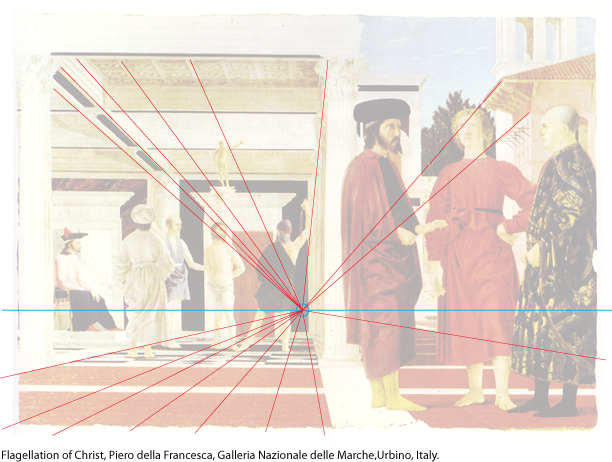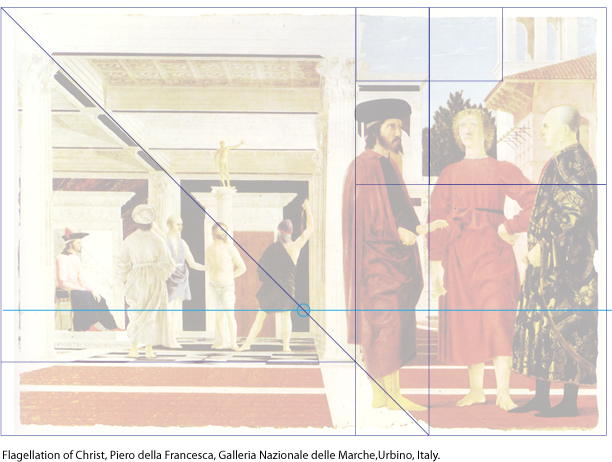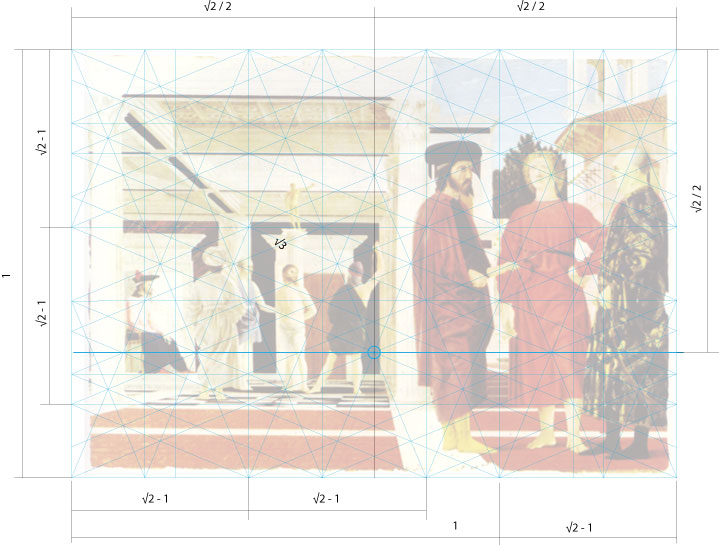The Flagellation of Christ:
An Artistic Geometric Analysis
Disclaimer: Please note that my approach to this analysis focuses on aesthetic inspiration, practicality, and possible theoretical implications rather than claiming historical accuracy.
As an artist myself, I understand that applying a geometrical formula to a work of art can be a risky endeavor. Creating art involves various considerations beyond adhering to a single, strict geometrical formula. However, for the sake of enjoyment and exploration, let's engage in this exercise and leave it up to you to draw your own conclusions. The painting used as an example here is "The Flagellation of Christ" by Piero della Francesca, which can be found at the Galleria Nazionale delle Marche in Urbino, Italy.

The dimensions of the painting are 58.4 cm × 81.5 cm. Although I am uncertain if these measurements are original, the aspect ratio of the painting is approximately 1:1.4.
It is evident that Piero della Francesca employs a form of central perspective to create the illusion of depth within the composition.

Considering the painting's aspect ratio is close to 1.4, I thought it would be intriguing to analyze the composition using a root rectangle perspective (for more information on root rectangles, click here). Since the number 1.4 is near √2, I will attempt to incorporate a square root of 2 rectangle into my analysis.

In the following image, observe the effects on the composition when overlaying a 1 to √2 (1:1.414) grid.

This approach offers an interesting perspective on potential artistic elements in the composition and their arrangement within the painting. Please remember, this is merely a hypothesis and not a definitive conclusion.
© Hans E Andersson